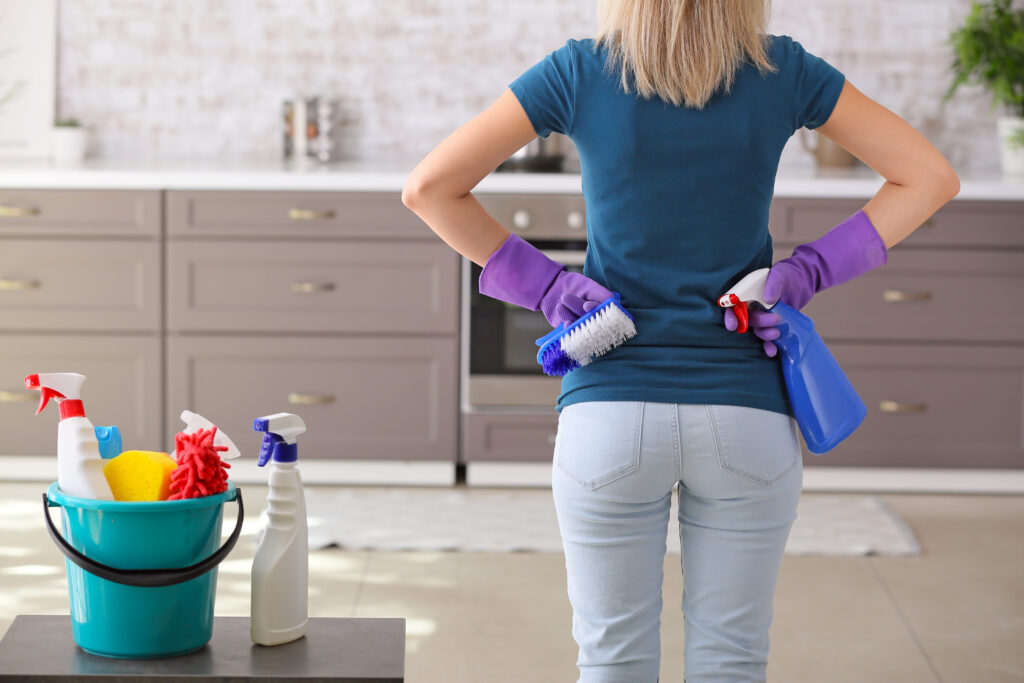Your home is susceptible to germs and bacteria as they’re transferred through dirty hands, shoes used outdoors, clothes, and other things you brought inside your haven. Since these bacteria can’t be seen, it’s essential to integrate a disinfection system into your home regularly. Thankfully, there are plenty of developed cleaning systems that can rid these germs away, ensuring the safety and health of your family.
The kitchen is the most crucial space that requires cleanliness and sanitation because this is where you prepare your meals. Failure to clean even one spot or surface of the kitchen could result in sickness. Hence, it’s wise to apply some modern ways to keep your kitchen well-sanitized.
Check out the following smart and modern ways to disinfect your kitchen:
1. Prepare Your Cleaning Solutions And Sanitizing Tools
Before you start your disinfection system in the kitchen, it’s necessary to prepare all your cleaning equipment and tools. Due to constant innovations and advanced development on cleaning solutions, like hypochlorous acid products, cleaning the kitchen is now more accessible and practical. Such cleaning solutions can be applied on non-porous surfaces, ensuring a well-sanitized food preparing facility inside your home.
Apply these reminders:
- Other than solutions, prepare your rubber gloves to cover and protect your hands when cleaning.
- It’s best to use rubber gloves, though disposable latex gloves will work, too.
- Use soap and warm water to wash your hands after cleaning with any product.
- To prevent any counter-effects or allergies, ensure that no leftover solutions will be left into your skin.
It’s also essential to properly disinfect kitchen surfaces because they can harbor both human germs and foodborne bacteria. By using hot water and soap, you can remove dirt and grime, as well as germs. It’s best to use a cleaner disinfectant for a speedy cleaning process.
If you intend for a home remedy cleaning solution, you can create it using vinegar mixed with water. Hydrogen peroxide also does the trick of killing germs and bacteria on unseen surfaces. However, try to test it out in a tiny corner first to ensure that it won’t cause discoloration to the surface. A critical reminder after using any kind of disinfectant is to wipe the surfaces down with water before preparing food and meals.
2. Clean And Wipe Hard Surfaces In The Kitchen
Light fixtures, cabinets, and appliances in your kitchen have handles or controls that are touched every time they’re turned on or opened. These are some surfaces that experience high traffic. If many people are living in your home, constantly cleaning them would prevent germs to spread.
Before hands are washed or after raw food is prepared, any touched surface can harbor bacteria. Cleaning these surfaces several times each day is recommended, especially after food preparation. Know the difference between deep cleaning and general cleaning so you can properly set your cleaning schedule.
To make cleaning more convenient, you can prepare a spray solution and cleaning cloth. What’s even more recommendable is a biodegradable wipe that can be thrown away after one use. These wipes contain a solution that gets rid of all living microorganisms on hard surfaces.
3. Clean And Disinfect The Trash Bins
Your waste container is a breeding ground for germs. Fortunately, germs and odors from the garbage can be reduced by applying the following tips:
- If you can’t manage to conquer smells, just place baking soda under the bag to control it.
- If possible, invest in a smaller garbage can that you can empty daily. When large cans can’t be filled in within the day, older trashes will accumulate and breed more bacteria inside the bin.
- If possible, wash, wipe, or clean the trash bin and the surfaces daily.
4. Decontaminate Countertops And Kitchen Tools
Bleach or other disinfectants in food preparation areas won’t be safe without rinsing the area afterward. Although it could be easy to wash it right after cleaning, there’s a chance that you may forget to do so. When this happens, the bleach may stick to the food or other edible things that have been laid out on the countertops.
It’s best to use cleaning solutions that are strong enough to kill bacteria but won’t poison the family. Flat surfaces in kitchens are prone to bacterial growth due to spills and cross-contaminations. Hence, you should wipe up food residue, liquids, and grime quickly to prevent bacterial growth.
5. Segregate Food Items Based On Packaging
To prevent cross-contamination, prepared and pre-packaged foods shouldn’t be in direct contact with raw foods. It’s necessary to properly segregate food items when you come back from the supermarket. Raw foods need to be bagged separately and stored in the home refrigerator or freezer.
Keep in mind to check the appropriate temperature of your fridge or freezer. Doing so is essential to retain the quality of the foods. Likewise, it’s equally vital to know how to defrost frozen meat safely, too.
Conclusion
A kitchen is where you and your loved ones tend to spend the most time, sharing meals and conversations. This means you have to ensure to make it a safe place for everyone. This can be done by applying the modern kitchen disinfection tips stated above.
